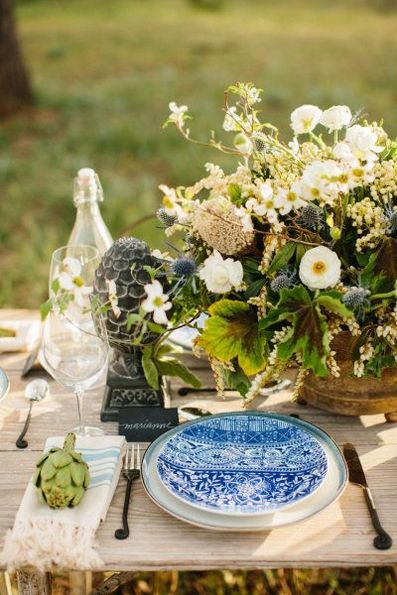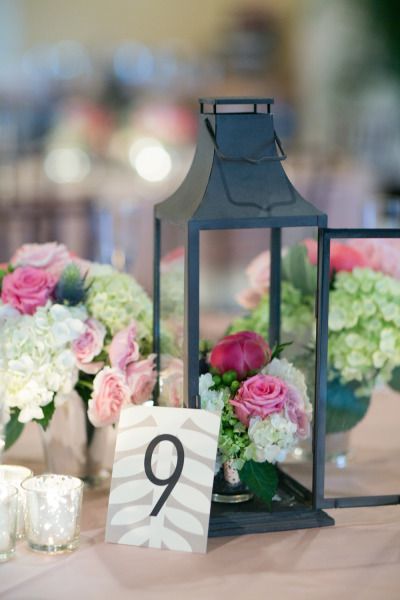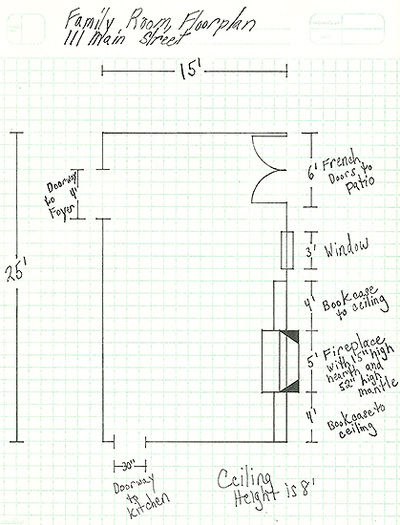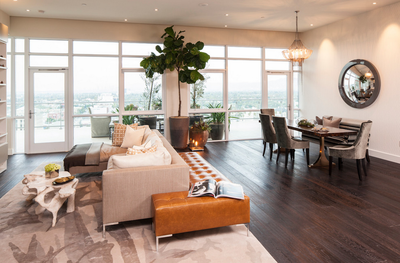 Photography: Marianne Wilson Photography; Floral Design & Styling: Knot Just Flowers Photography: Marianne Wilson Photography; Floral Design & Styling: Knot Just Flowers A stylish or cute centerpiece is not just used for weddings. It can be used for even the simplest of occasions. Having a family friend come over? Welcome them with your new dish set and flowers from the garden. Your spouse is coming home early? Whip up some table art by using your finest linens and china, light those candles and express your appreciation for your better half! There is no need to hide away your grandmother's linens or your newest purchase at a design fair, just like a kitchen being known for the center of a home, a nicely set table warms the heart of any space! Listed below are a few photos and tips on creating a stunning atmosphere at your table. Theme: What is the occasion? Is it a family dinner, a holiday, or lunch with friends? Select a theme that its the occasion. Possibilities include using the months freshest flowers or arranging the table in a way that flatters your guests. Is their favorite color purple? Serve grape juice and bring out the closest linen color you have. As a general rule of thumb, as a family you should own one tablecloth or napkin set in every color of the rainbow. Now, don't fret if you only own white linens. A white tablecloth, will forever remain the classic table setting. A great way to dress up that classic look is with colored dishes, glassware, silverware, or floral arrangements. Table Coverage: Your table cover is the background for the food and table appointments (dish ware) you place onto it. It protects the table and makes for less noise. Placemats and/or tablecloths may also be used. Sometimes a table is left bare, but whatever your occasion choose a cover that is appropriate for that time. Matching and blending colors is a great way to spruce up your meal, also don't be afraid to mess with textures in the dishes, centerpiece and more. Finally, don't forget to use something quite different for contrast. Place Setting: You will need at least 20 inches for each person's dishes. Place the plate or china in the center, about an inch from the edge of the table. Place the knives and spoons on the right, and forks on the left. Turn the edge of the knife towards the plate. Napkins folded into oblongs are placed next to forks, but placement of a napkin will always vary. The first beverage glass is placed about an inch from the knife, additional glasses to the right of the first glass. If coffee is served, the cup is placed on the saucer and set to the right of the spoon. Fresh: Inspired by the colors and aromas of nature, cut fruit makes a very appealing centerpiece when it's done right. Make sure to use a variety of fruits that will stay firm for the duration - melon, pineapple, apricots, grapes and lemons would all be good choices. You'll also need wood skewers of varying lengths and a stable base. Cut fruits are a natural for a summer celebration. They smell wonderful, look great, and you can eat them if things are running late in the kitchen. Let It Resemble You: Your home should be a reflection of yourself, your hobbies, family, loves, style and personality. When you prepare dinner it's a reflection of your heritage, your appreciation for food and your patience in learning the right ingredients. Your table setting should flatter not only your meal but who you are, what you like and accent your homes atmosphere!
1 Comment
 Designer: MuseInteriors; Photographer: John Bessler Designer: MuseInteriors; Photographer: John Bessler Space Planning sounds rather simple at first, throw a sofa there, put the chairs on the side, and coffee table in the middle, right? Of course that's not always quite how it works. Successful planning requires considering a variety of tangibles: physical limitations, size,furniture, flow, and more. Before you start remodel or redesign your space consider the following. 1. Graph it. A great way to carefully plan out your space is measuring your space and using each graph paper square as a foot. Cut out your furniture using the same tools. and place them in your floor plan. Consider the following questions. Can you walk through the space? Can your guests have a conversation without cranking their necks? Is it a comfortable layout? Can multiple people pass through the space at a time? Can you reach the tables from sitting down? And more. When you are done creating your optimal space: make the move, take a seat, and have your family sit down, then ask yourself, "Does this work?" 2. Determining Function. Think carefully about what you want your new room to do and who will be using it. What will be required of this space. Will you be having family movie nights? Hosting parties? Also, consider the ages of those in your household, and if they need space for disabilities. How durable and accessible does everything need to be? Be flexible if you need to, so that your room can grow with your family. 3. Make Your Home Flow. Your new room needs a space that not only flows within itself, but flows with the other rooms in your house. A great way to accomplish this is by using materials and colors similar from room to room. Consider the furniture, millwork, baseboards and interior doors this will allow your home to visually flow. You can accomplish even the biggest room successfully by combining colors, graphing the plan and then laying it out, finally ensuring that the rooms' design is functional. Take a look below at plans and examples on how to design your space. |
Click to set custom HTML
Archives
January 2019
Categories
All
|










